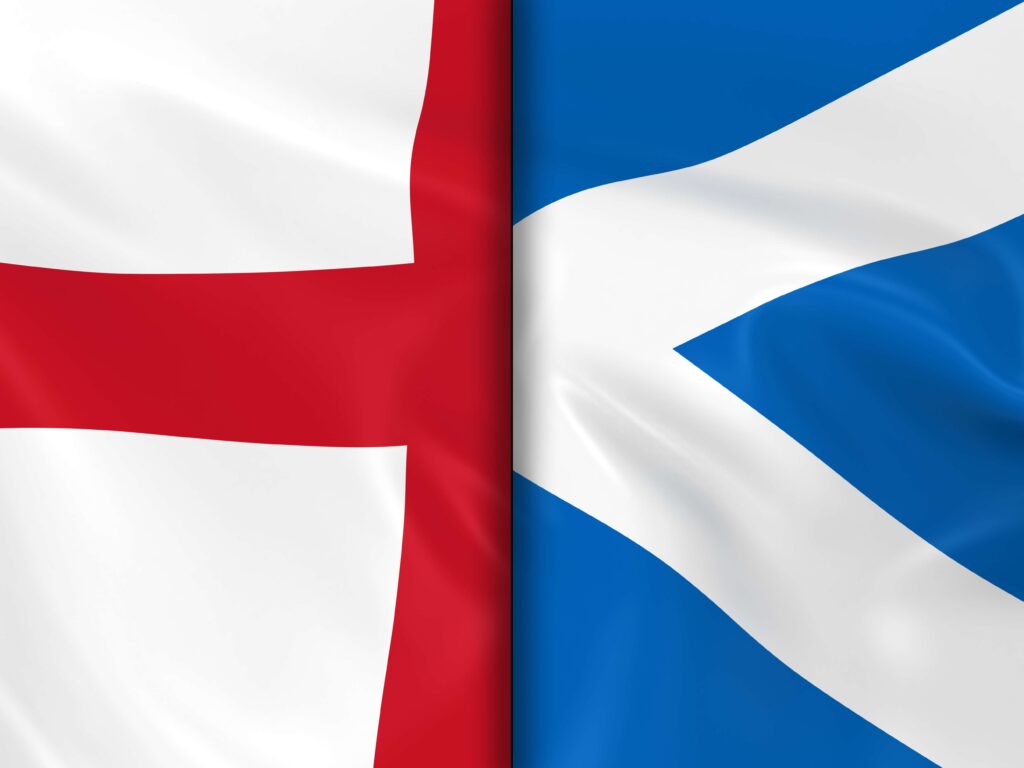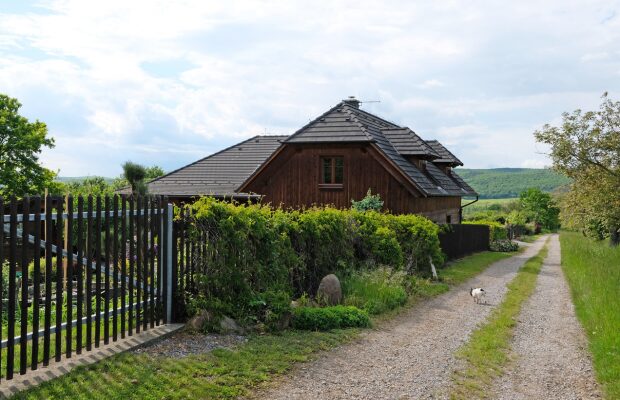Scotland and England might both be part of the UK.
But when it comes to buying property, there are some key differences between the two nations.
If you’re living in England but buying a home north of the border, or vice versa, we’ll outline those key differences here, so you know exactly what to expect.
The difference between buying a house in Scotland and England explained
1 Making an offer
In England, properties are marketed with an asking price, but this is negotiable, and buyers can make an offer on a property based on what they’re willing, or able, to pay.
In Scotland, buyers will ‘note their interest’ in properties, meaning will be kept informed about other offers on the property and any closing date for further offers.
In Scotland, properties are placed on the market either with a fixed price or an ‘offers over’ price.
‘Offers over’ properties see buyers make written sealed bids, outlining the price they are willing to pay above the ‘offers over’ price and their timescale for completing the purchase.
Once all the sealed bids are in, the seller will make a decision based on the offers and timescales put forward from the interested buyers.
Properties in Scotland marketed at a fixed price, usually when the seller wants a fast sale, are usually sold to the buyer who offers that fixed price first.
2 Property surveys
Buyers in England often have a survey done on a property once their offer has been accepted, both for peace of mind and to find out if any major work is required.
The only documentation in relation to the property’s condition that is a legal requirement for property sales in England is an Energy Performance Certificate (EPC).
In Scotland, however, the seller must provide a Home Report before they can put their property on the market – unless the property is a new-build home.
The Home Report is a survey on the property’s condition, but also includes information on its energy efficiency and a completed questionnaire from the seller.
3 Stamp duty
Stamp duty is often one of the largest expenses for buyers.
In Scotland, stamp duty was abolished in 2012 and replaced with Land & Buildings Transaction Tax (LBTT).
While LBTT and stamp duty are essentially the same thing – a tax on buying property – the rates of each vary.
In England, the stamp duty exemption threshold is currently set at £500,000 until March 31, 2021, when it could revert back to its previous £125,000 figure.
In Scotland, buyers currently pay no LBTT on the first £250,000 of a property’s purchase price, again until March 31, 2021.
After that date, the LBTT threshold could revert back to £145,000.
More information on Scotland’s LBTT rates is here.
4 When a sale becomes legally binding
Buyers in England will already be well aware of the importance of exchanging contracts with their sellers.
Until solicitors for both sides have made that exchange, either buyer or seller could pull out of the transaction.
It can take as little as six weeks to exchange on a property purchase in England, although, at the other end of the scale, some transactions take months to reach that stage.
In Scotland, there is no single contract that binds both seller and buyer to the transaction.
Instead, solicitors on both sides will exchange a series of official, signed letters regarding the sale, which are known as ‘missives’.
Once all the missives are concluded, the sale is legally binding, and this can be as quick as one or two weeks.
5 Completion of the sale
Completion on property transactions in England usually takes place a few days or one or two weeks after the exchange of contracts.
On completion day, the solicitor acting for the buyer will transfer all funds to relevant parties and, once this is complete, the buyer will receive the keys to the property from the seller’s estate agent.
In Scotland, completion is referred to as ‘date of entry’, although the process is very similar to what happens in an English sale.
Moving between England and Scotland: The process
If you’re buying in Scotland, here’s the process you’ll need to follow:
- Once you have found a property you like in Scotland, hire a solicitor
- Request access to the Home Report on the property you like
- Apply for your mortgage
- ‘Note interest’ in the property through your solicitor
- Make your offer through your solicitor. Your bid should include your status as a buyer, how quickly you can complete the purchase and any other conditions
- The seller’s solicitor will address your offer or make a counter-offer
- If your offer is accepted, your solicitor and the seller’s side will issue missives of offer and acceptance.
- If the seller’s solicitor issues an ‘unqualified’ acceptance, the sale becomes legally binding immediately
- If the seller’s solicitor issues a ‘qualified’ acceptance, this means the offer is accepted subject to certain conditions. In this case, the sale becomes binding only when your solicitor has accepted those terms through a missive to the seller’s side
- Once missives are concluded, your solicitor will finalise the sale and then make payments to the seller’s side on the agreed date of entry
Selling in England and buying in Scotland
If you’re selling your home in England, perhaps moving from London to Scotland, it’s important you understand all the differences we’ve outlined between the two countries when it comes to property transactions.
It’s also important you time things correctly, because of those differences.
Because the Scottish system can be much quicker than England and doesn’t work as well with chains of sales, you might be better off wating until you have exchanged contracts on the sale of your home in England before making an offer on a Scottish property.
If you have a property to sell in England, or your sale is in progress, you’re less likely to be seen as an attractive buyer against sealed bids from people with nothing to sell.
However, Scottish solicitors should always wait to conclude missives until exchange of contracts has taken place on the English property.
This means you’re very unlikely to be in a position where you’re legally bound to your Scottish property, but your buyer in England could still pull out.
Best places to buy property in Scotland
If you’re thinking of moving to Scotland, there are a whole host of amazing towns, cities and villages you could look to buy in.
Glasgow
A cultural hub that’s full of history and has incredible period properties to match, Glasgow is a great option for buyers looking to make the move to Scotland.
Ayr
If you’re looking for a Scottish seaside retreat, Ayr, on the west coast, offers superb Victorian properties and is within 40 miles of Glasgow.
Stirling
Right in the centre of Scotland, Stirling offers amazing links to both Glasgow (26 miles) and Edinburgh (37 miles).
Aberdeen
Port city Aberdeen, on the north east coast, is best known for its imposing, granite-built architecture, but also offer buyers an amazing 45 parks and gardens within the city.




